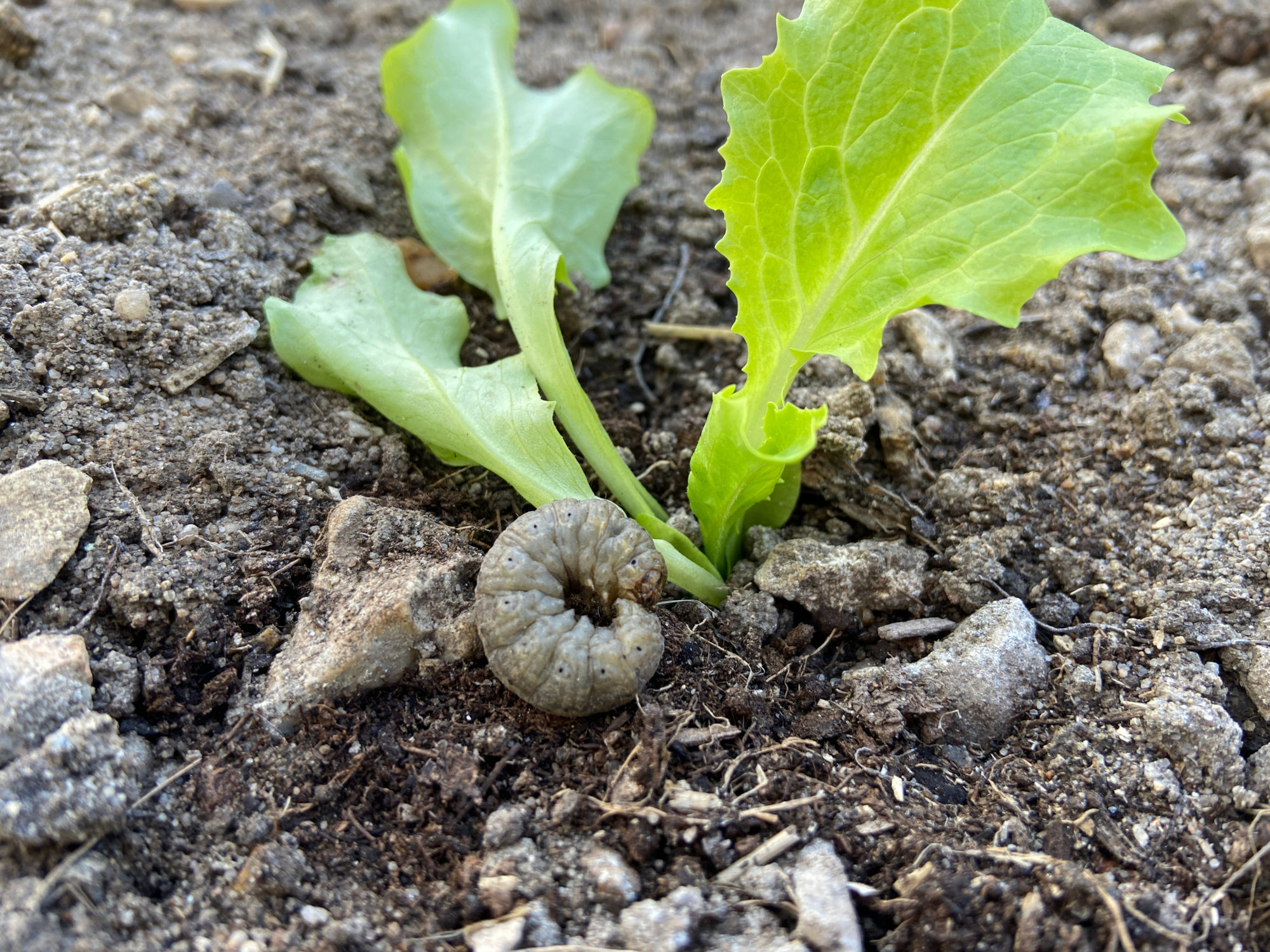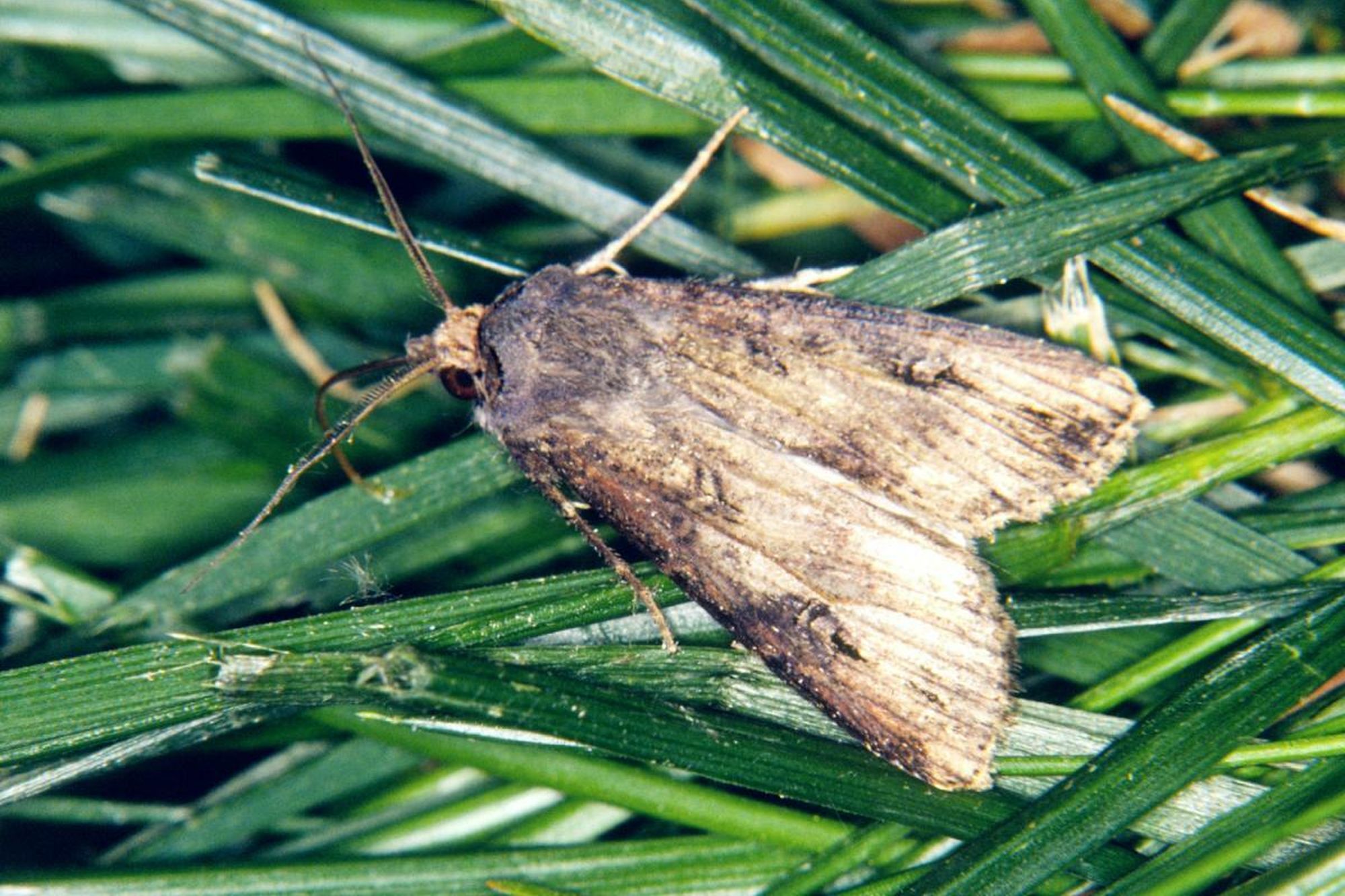
Cutworm outbreak!
Reports are being received from the eastern and central parts of South Africa of a significant cutworm infestation in maize and vegetable crops in the wake of good early summer rainfall, followed by warm days.
The cutworm is a moth species with big fat, white larvae with a non-selective appetite for anything green and juicy. Owing to its subterranean living and foraging habits, it goes unnoticed until the grower finds plants dropping as though they had been axed. By that time, the cutworm larvae has done its damage and replanting is the only option.
Maize and vegetable crops will need to be protected against cutworms for the next two years at least as climate forecasts indicate normal summers with moist and warm weather, which favour crops but also plant pests such as the cutworm.
Scouting – the first line of defence
To be one up on the enemy, you need to know its battle plan and manoeuvres. This is quite easy for moth pests (all members of the Lepidoptera order) because moths rest during the day with their wings spread open and only start flying around at dusk, seeking host plants where they will lay eggs to produce the next generation of caterpillars, which will hatch, devour crops, pupate, undergo metamorphosis to become moths and continue their life cycle of mating and laying eggs.
Any farmer – whether a home garden enthusiast, subsistence or small-scale farmer – can scout for pest species. Walk around the garden or crop at dusk (just after sunset) and look for grey, nondescript moths flying into or around the crops. If more than 10 moths are observed in 15 minutes, the alarm bells should be ringing – there is a strong possibility of an invasion of cutworms.

Focus on the larvae
Spraying the moths is a futile exercise – they are mobile and pesticide will not penetrate their fine body scales. Instead, tackle the larvae underground. Larvae are between 30mm and 40mm long, thick, hairless, and vary in colour from pale grey to greenish-brown to black. They have a huge appetite and cause serious damage to plants. They forage at night, crawling along until they find a suitable plant, burrow into the soil and feed underground. Scratch around in soil to reveal these fat worms that are only fit for one purpose: bait on a hook for fishing!
Contact/stomach insecticides, insecticidal baits and sound cultivation practices
Soil cultivation is an important tool in combating cutworm larvae. The soil should be loosened and turned to expose cutworms and a good stomp with the shoe should take care of most of them. It is, however, impossible to uncover all the cutworm larvae by cultivation hence a good insecticide is necessary.
Kombat has three insecticides that make short work of cutworms: Kombat Cutworm, Kombat Cypermethrin (well suited for small-scale farmers) and Kombat Cypermethrin Home Garden, which is a valuable tool for home garden veggie growers.
Ready-to-use cutworm bait should be applied directly around the newly planted seedlings or seed directly after planting – this serves as a barrier and will lure the cutworms to the bait before they attack the plants. Loosen the soil with a small hand fork and sprinkle the bait directly around the base of the plant. This will be an effective barrier around the plants.
If cutworms invade a crop or plants in more advanced growth stage, Kombat Cypermethrin or Kombat Cypermethrin Home Garden can be used to drench the soil around the plants to kill cutworm larvae. Simple spraying is ineffective; the soil must be thoroughly drenched to penetrate deeply and kill the cutworms before they inflict serious damage.
Kombat Cutworms contain sodium fluosilicate and the two Kombat Cypermethrin products contain cypermethrin. None of these two active ingredients are systemic and cannot be taken up by the plant, hence it does not leave a residue in the plants or the edible parts thereof. If cypermethrin is sprayed on to the plant to control other plant pests, check the withholding period and harvest only after that period has expired.
Cypermethrin is virtually non-toxic to birds and will not pose a risk to chickens or other poultry foraging around the vegetable patch. Be careful though when using the Kombat Cutworms bait; instead apply small quantities in the early evening after chickens have gone to roost to eliminate any possibility of them eating the small bait pellets.